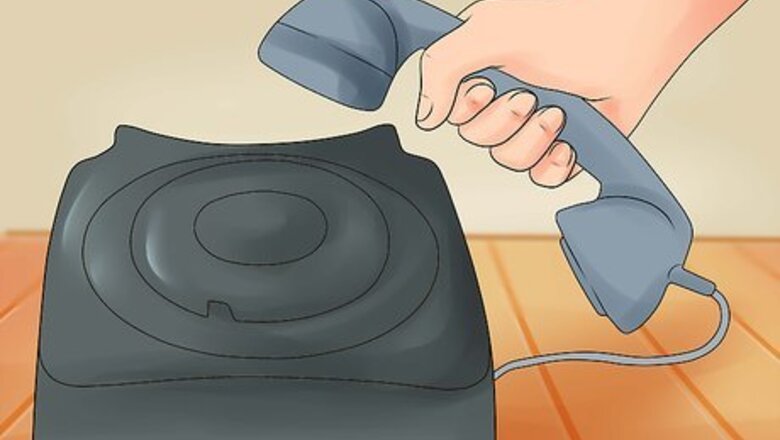
views
X
Research source
The bad news is that, when a jellyfish stings you, they release thousands of extremely small barbs that hook into your skin and release venom. Most of the time, this venom will cause slight discomfort or a painful red rash. In rare cases, jellyfish venom can result in illness throughout the body. If you or someone you know had the misfortune of being stung by a jellyfish, quick and decisive action will help you.
What to Do Right Away
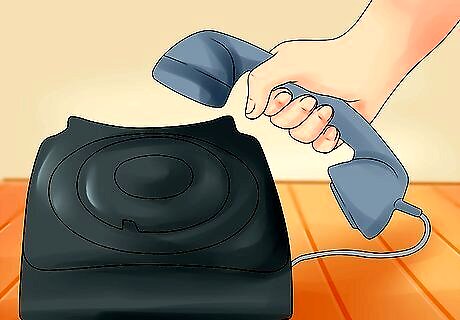
Know when to call emergency services and seek immediate help. Most jellyfish stings do not require medical intervention. However, if you or someone else finds themselves in the following situations, seek immediate medical help: The sting itself covers more than half your arm, half your leg, a large part of your torso, or your face or genitals. The sting causes a severe allergic reaction, including but not limited to difficulty breathing, dizziness or lightheadedness, nausea, or palpitations. The sting came from a box jellyfish. Box jellies have extremely potent venom. They are found off the coast of Australia, and elsewhere in the Indo-Pacific, as well as Hawaii. They are pale blue in color and have a cube-shaped head, or "medusa." They can grow approximately 6 feet (2 meters) tall.

Get out of the water as calmly as possible. To head off the possibility of being repeatedly stung and to begin treatment, seek land as soon as you are stung. As you get out of the water, try not to scratch the sting-site or touch it with your hands. There are likely still tentacles attached to your skin, and itching or touching them will only get you stung more.
Rinse the sting with sea water. As soon as you are out of the water, rinse the area of the sting with salt water (not fresh water) to wash away any clinging tentacles or stinging tissue. Don’t rub the area with a towel after rinsing, as this can activate any remaining stingers.

Douse the tentacles liberally with vinegar for at least 30 seconds. For maximum effectiveness, mix the vinegar with hot water. This mixture is the most effective first aid treatment for many types of jellyfish stings. Make sure that the water is not hot enough to burn or scald your skin. Some types of jellyfish stings may respond better to a combination salt water and baking soda.
Removing Jellyfish Tentacles from the Skin
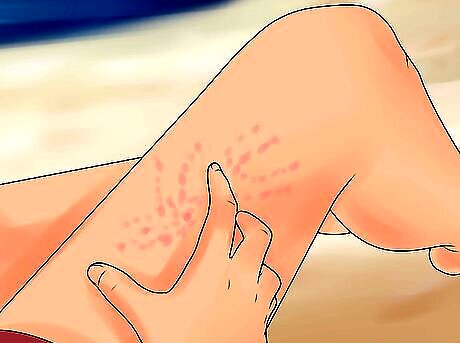
Carefully scrape off any remaining tentacles. After rinsing the sting, scrape off remaining tentacle residue with a plastic object, like the edge of a credit card. Do not attempt to rub away the tentacles with a cloth or towel, as this will cause more stinging cells to fire. Stay extremely still while you remove the tentacles. The more you move around while you attempt to remove jellyfish tentacles, the more venom will be released. If you are experiencing shock, make sure that someone has called emergency services and try to calm yourself as much as possible.
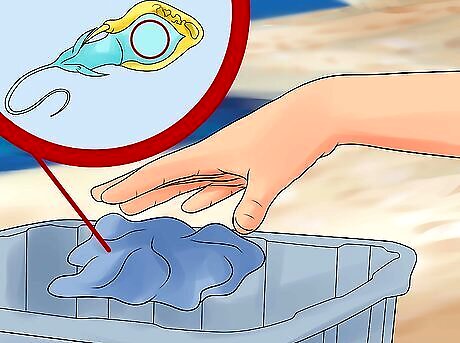
Throw away any contaminated materials. Drive down to 0% the likelihood that you'll accidentally sting yourself again. Throw away anything that might still have stinging cells on it, such as objects you used to scrape off the tentacles or clothing that may have tentacles on it.
Manage your pain with heat. Once the tentacles have been removed, relieve pain by immersing the stung area in hot water (not scalding!). Keep the water temperature around 104-113° F (40-45° C) to prevent burns. Studies have shown that heat deactivates the venom toxins, relieving pain better than ice

Treat pain with painkillers. If you are experiencing extreme pain, take a recommended dose of a painkiller, such as paracetamol or ibuprofen. Ibuprofen can also reduce inflammation associated with the sting.
Avoiding Common Mistakes
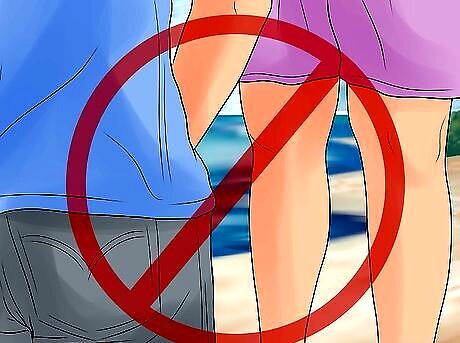
Don't try to treat jellyfish stings with urine. The idea that urine was a good treatment for jellyfish stings probably originated as an old wives' tale, and then entrenched itself even further after a Friends episode used it for comedic effect. There's no need to pee on your jellyfish sting!
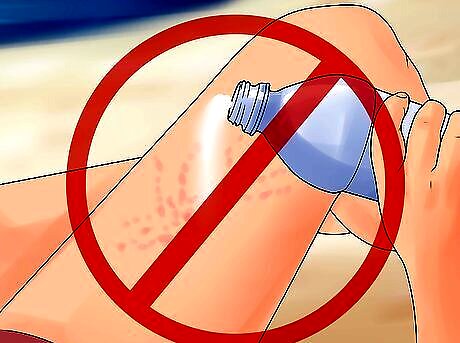
Avoid applying fresh water to the sting. Most jellyfish stings occur in saltwater. That means that the nematocysts (stinging cells) contain large concentrations of saltwater. Any change to the solution of saltwater in the nematocysts will cause the venom cells to fire. Fresh water does just this. Stick with saltwater instead.

Don't use meat tenderizer to deactivate stingers. There isn't any research indicating that it actually works, and it may cause more harm than good.
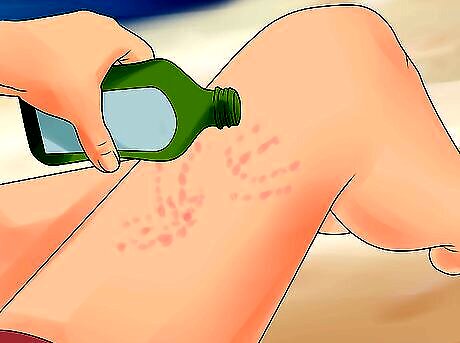
Know that alcohol applied directly to the skin may backfire. Like adding a freshwater solution to the skin, alcohol may actually cause the nematocysts to discharge even more venom, leading to a more painful experience.
Treating Discomfort and Following Up

Clean and bandage any open sores. After you've removed the tentacles and relieved most of the lingering pain, clean the affected area with warm water. (It doesn't need to be saltwater, as the nematocysts — which react with the fresh water — should have already been removed.) If the skin is still visibly irritated or raw, lightly cover the area with a bandage and wrap with gauze.
Keep the area clean. Three times a day, clean the area with warm water and apply an antibiotic ointment like Neosporin. Then re-wrap the area with a bandage and gauze.

Use oral and topical antihistamines to relieve itching and irritation. Soothe any remaining skin irritations with over-the-counter antihistamine pills, or with topical creams containing diphenhydramine or calamine.

Wait a full day for the pain to subside and several days for the irritation to go away. 5-10 minutes after treatment, the pain should begin to lessen. After a full day, the pain should be almost completely gone. If you continue to experience pain past a full day and haven't done so already, see a doctor or specialist for professional treatment. In rare cases, stings from jellyfish can cause either infection or scarring, but most people avoid these scenarios entirely, even after especially painful stings. In extremely rare cases, people experience hypersensitivity to the venom a week or several weeks after being stung. Blisters or other skin irritations may surface seemingly out of the blue. While this hypersensitivity is generally not dangerous, it may be helpful to see a doctor or dermatologist for assistance.




















Comments
0 comment